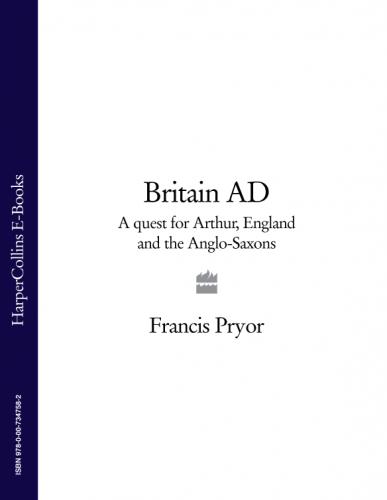There is one important difference between history and archaeology which has nothing to do with the quality of the data we study, but rather its quantity. Written historical information on the post-Roman era in Britain is surprisingly scarce, and new discoveries happen very rarely; when they do, it is often in the course of archaeological excavation. By contrast with the essentially static historical ‘database’, that of archaeology is constantly increasing. Hardly a day goes by without some new discovery. Often these discoveries might appear routine and unimportant, such as the exposure of the footings of yet another Saxon-period house, but these isolated pieces of information can be fitted together to form a coherent pattern. It’s a process that can take years, as we will see (Chapter 8) in the case of Dominic Powlesland’s work at West Heslerton in Yorkshire, but that does not make it any less reliable. The progress of archaeological research tends to be gradual and cumulative; it can only be measured from time to time. That is why it is sometimes necessary to step back in both time and space to take a broader view.
When I started writing this book, I intended to organise it much as we had done the three television films, for the simple reason that it seemed to work very well. I also liked the process that gave rise to the structure of the films. In many ways the making of the television series was like an archaeological project, being based on a small and closely integrated team. As the months passed its structure grew in complexity: stories nested within stories in a way that is only possible on film, where one can show one thing on screen, while telling another in commentary and flashback. I decided to arrange the book in a simpler fashion, that was only broadly based on the structure of the films. I start with two chapters on the ancient sources and modern origin myths of Britain, and the legends that surround King Arthur. In subsequent chapters I turn to the archaeological evidence, starting not in the Dark Ages of immediately post-Roman Britain, not even in the preceding Roman period, but in pre-Roman, or prehistoric, times, where the roots of the mythical King undoubtedly lie.7
Dates and Periods
| Date | Period Name | Alternative Names | Period |
| 1500 | Post-medieval | ||
| 1066 | Medieval (can start c. AD 800) | The Middle Ages | |
| 800 | Late Saxon | Early Medieval | |
| 650 | Middle Saxon | ||
| 450 | Early (or Pagan) Saxon (‘Pagan’ is an older usage) | Early Christian (in the south-west) | ‘The Dark Ages’ or Migration Period |
| 410 | Sub- or Post-Roman | ||
| 43 AD | The Roman Period | ||
| BC 150 | Late Iron Age | ||
| 450 | Middle Iron Age | ||
| 750 | Early Iron Age | ||
| 1250 | Late Bronze Age | ||
| 1500 | Middle Bronze Age | ||
| 2500 | Early Bronze Age | ||
| 4200 | Neolithic or New Stone Age | ||
| 10,000 | Mesolithic or Middle Stone Age | ||
| 500,000 | Palaeolithic or Old Stone Age |
| Archaeological Characteristics | Notes |
| 1485 Le Morte d’Arthur printed c. 1136 Geoffrey of Monmouth’s History of the Kings of Britain 1066 Norman Conquest | |
| Towns flourish | 871-899 King Alfred reigns |
| Appearance of first towns in Britain | 731 Bede’s History finished 664 Synod of Whitby |
| 625 King Raedwald of Essex buried at Sutton Hoo 597 St Augustine’s mission to the Anglo-Saxons lands in Thanet c. 475-550 Gildas writes | |
| ‘Anglo-Saxon’ pottery at end of 4th century | |
| Most of Britain a part of the Roman Empire | 409 British reject Roman rule367 great Barbarian Conspiracy60-61 Boudica’s revolt |
| Wheel-made pottery British Celtic Art flourishes | 54-55 Caesar’s two expeditions to Britain |
| Period of rapid population rise | |
| Appearance of earliest Celtic Art | |
| First construction of hillforts | |
| Era of metalwork hoards | |
| Era of round barrows Appearance of Beaker pottery | 1600 Plank-built sea-going boats |
| 2950 Stonehenge started First farming in Britain around 4200 | |
| Hunter-gathering and fishing communities, using small flint implements and weapons | End of the last Ice Age |
| Hunter-gathering communities, using large flint implements and weapons | Ages of IceEarliest people in what was later to become Britain |
*Gibbon adds a footnote on his sources here, which concludes with the remark that ‘Mr Whittaker…has framed an interesting and even probable, narrative of the wars of Arthur: though it is impossible to allow the reality of the round table.’
